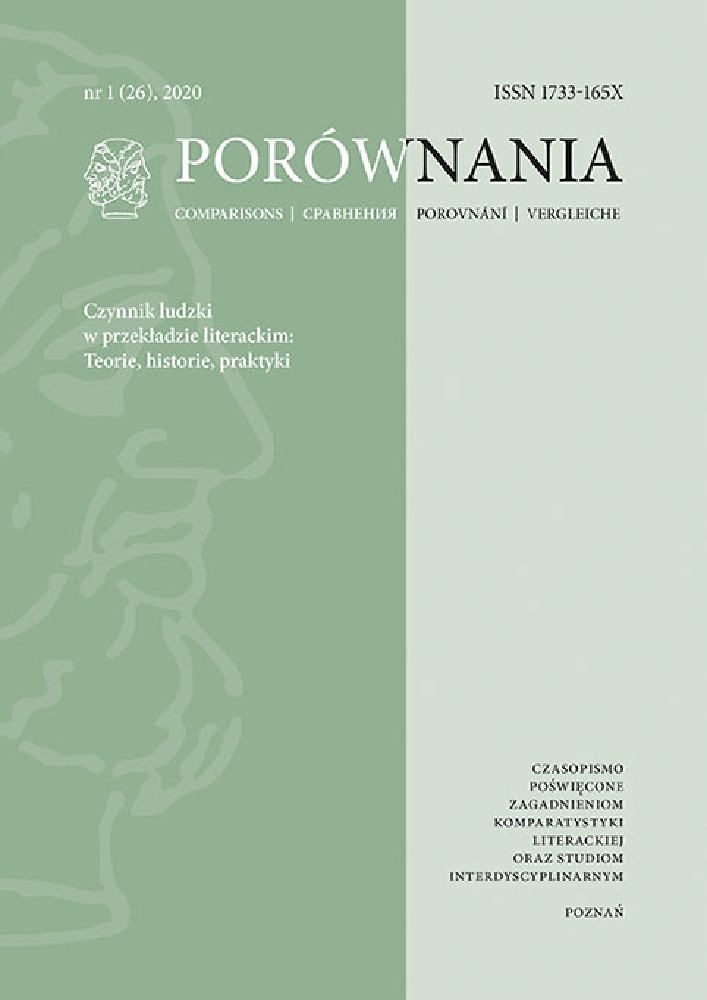Povzetek
Following the iceberg model of culture, the present study offers a view of a poetic text and its translations as the tips of cultural-linguistic icebergs. This assigns to the translator the task of navigating the meanders of the source and target languages as well as diving below the surface of words. This thesis is exemplified by an analysis of English translations of Wisława Szymborska’s poem Rozmowa z kamieniem with its keyword kamień and its underlying cultural-linguistic foundations, supported by the concept of linguistic worldview. Hopefully, in this framework the human factor in translation still is, and will always be, irreplaceable.
Literatura
Agar, Michael. “Culture: Can you take it anywhere? Invited Lecture Presented at the Gevirtz Graduate School of Education, University of California at Santa Barbara.” International Journal of Qualitative Methods, 5(2) June 2006. Web. 01.06.2019.
Balbus, Stanisław. Świat ze wszystkich stron świata. O Wisławie Szymborskiej. Kraków: Wydawnictwo Literackie, 1996.
Bartmiński, Jerzy. Aspects of Ethnolinguistics. Transl. Adam Głaz, Ed. Jörg Zinken. London: Equinox Publishing Ltd., 2012[2009].
Brajerska-Mazur, Agata. Filutka z filigranu paraduje w cudzym losie. Wisława Szymborska w anglojęzycznym przekładzie Stanisława Barańczaka i Clare Cavanagh. Lublin: Wydawnictwo KUL, 2012.
Gicala, Agnieszka. Przekładanie obrazu świata. Językowy obraz świata w przekładzie artystycznym. Kraków: Universitas, 2018.
Głaz, Adam, Danaher David S., Łozowski Przemysław, eds. The Linguistic Worldview: Ethnolinguistics, Cognition, and Culture. London: Versita, 2013.
Gralewicz-Wolny, Iwona. Poetka i świat. Studia i szkice o twórczości Wisławy Szymborskiej. Katowice: Wydawnictwo Uniwersytetu Śląskiego, 2014.
Hall, Edward T. The Silent Language. Garden City: Doubleday, 1959.
Katan, David. “Translation as intercultural communication”. The Routledge Companion to Translation Studies. Ed. Jeremy Munday. London: Routledge, 2009. Pp. 74-92.
Kopaliński, Władysław. Słownik symboli. Warszawa: Wiedza Powszechna, 1990.
Nyczek, Tadeusz. Jarmark cudów. 30 × Szymborska. Warszawa: Państwowy Instytut Wydawniczy, 2015.
Pajdzińska, Anna. “The Linguistic Worldview and Literature”. The Linguistic Worldview: Ethnolinguistics, Cognition, and Culture. Ed. Adam Głaz, David S. Danaher, Przemysław Łozowski (eds.). London: Versita, 2013. Pp. 41-59.
Stala, Marian. “Radość czytania Szymborskiej.”. Radość czytania Szymborskiej. Wybór tekstów krytycznych, prepared by Stanisław Balbus, Dorota Wojda. Ed. Jerzy Illg. Kraków: Znak, 1996. Pp. 88-110.
Stockwell, Peter. Cognitive Poetics: An Introduction. London: Routledge, 2002.
Szymborska, Wisława. Wislawa Szymborska – Odczyt Noblowski 1996. Poeta i Świat, https://tinyurl.com/y88pfxjl, 1996, Web. 4.08.2015.
Szymborska, Wisława. Nic dwa razy. Wybór wierszy / Nothing Twice. Selected Poems. Trans. Stanisław Barańczak and Clare Cavanagh, afterword by Stanisław Barańczak. Kraków: Wydawnictwo Literackie („Seria Dwujęzyczna”), 1997.
Szymborska, Wisława. Miracle Fair. Selected Poems of Wisława Szymborska. Transl. Joanna Trzeciak. New York: W. W. Norton & Company, 2002[2001].
Wierzbicka, Anna. Understanding Cultures Through Their Key Words. Oxford: Oxford University Press, 1997.
Licenca
Utwory opublikowane w czasopiśmie „Porównania”, na platformie Pressto należącej do Uniwersytetu im. Adama Mickiewicza w Poznaniu są udostępniane na licencji Creative Commons Uznanie autorstwa - Bez utworów zależnych 4.0 Międzynarodowe (CC BY-ND 4.0)
Tym samym wszyscy zainteresowani są uprawnieni do korzystania z utworów opublikowanych pod następującymi warunkami:
-
uznania autorstwa — czyli obowiązek podania wraz z rozpowszechnianym utworem informacji o autorstwie, tytule, źródle (odnośniki do oryginalnego utworu, doi) oraz samej licencji
-
bez utworów zależnych — remiksując, przetwarzając lub tworząc na podstawie utworu, nie wolno rozpowszechniać zmodyfikowanych treści.
-
brak dodatkowych ograniczeń — nie można korzystać ze środków prawnych lub technologicznych, które ograniczają innych w korzystaniu z utworu na warunkach określonych w licencji.
Uniwersytet im. Adama Mickiewicza w Poznaniu zachowuje prawo do czasopisma jako całości (układ, forma graficzna, tytuł, projekt okładki, logo itp.).
Autor zachowuje prawa majątkowe, ale udziela zgody Uniwersytetowi im. Adama Mickiewicza w Poznaniu na wykorzystanie dzieła. Autorzy tekstów zakwalifikowanych do publikacji proszeni są o wypełnienie podpisanie i przesłanie umowa (PL) agreement (EN)
Agreement for granting a royalty-free license to works with a commitment to grant a CC sub-license





